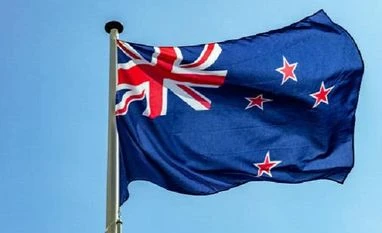New Zealand's central bank raised its benchmark interest rate by a half-point Wednesday to 4.75 per cent as it continues trying to wrestle down inflation.
The increase, which can raise the borrowing costs for consumers on everything from credit cards to mortgages, comes despite the economic pain that a devastating cyclone is already inflicting on many people. The bank said that over time, the cyclone rebuild will only add to inflationary pressures.
Cyclone Gabrielle hit New Zealand last week, killing 11 people and causing billions of dollars in damage to homes and infrastructure.
Reserve Bank Governor Adrian Orr said the committee that makes interest rate decisions agreed the rate needed to increase to ensure that inflation returned to the bank's target of around 2 per cent from its current level of 7.2 per cent.
Orr said that while there were some early signs price pressures are easing, core inflation remained too high and employment was at its maximum sustainable level, with the unemployment rate at a low 3.4 per cent.
Cyclone Gabrielle and other recent severe weather events have had a devastating effect on the lives of many New Zealanders, Orr said. It is too early to accurately assess the monetary policy implications of these weather events, given that the scale of destruction and economic disruption are only now becoming evident.
Orr said the committee believes that the disaster is likely to increase prices for some goods over the coming weeks, while having a negative impact on economic activity and exports. He noted that the government had yet to determine the scale and timing of its economic response to the cyclone.
The 0.5 per cent rate rise comes after a record 0.75 per cent hike in November. At 4.75 per cent, the official cash rate is at the highest level it has been since early 2009, soon after the global financial crisis.
The rate increase was in line with market expectations, and the currency was little changed, with 1 New Zealand dollar trading at about USD 0.62.
New Zealand's key interest rate is now similar to the U.S. rate of 4.5 per cent to 4.75 per cent but is higher than in many other developed nations including neighbouring Australia, where the rate is 3.35 per cent.
(Only the headline and picture of this report may have been reworked by the Business Standard staff; the rest of the content is auto-generated from a syndicated feed.)
You’ve reached your limit of {{free_limit}} free articles this month.
Subscribe now for unlimited access.
Already subscribed? Log in
Subscribe to read the full story →

Smart Quarterly
₹900
3 Months
₹300/Month
Smart Essential
₹2,700
1 Year
₹225/Month
Renews automatically, cancel anytime
Here’s what’s included in our digital subscription plans
Exclusive premium stories online
Over 30 premium stories daily, handpicked by our editors


Complimentary Access to The New York Times
News, Games, Cooking, Audio, Wirecutter & The Athletic
Business Standard Epaper
Digital replica of our daily newspaper — with options to read, save, and share


Curated Newsletters
Insights on markets, finance, politics, tech, and more delivered to your inbox
Market Analysis & Investment Insights
In-depth market analysis & insights with access to The Smart Investor


Archives
Repository of articles and publications dating back to 1997
Ad-free Reading
Uninterrupted reading experience with no advertisements


Seamless Access Across All Devices
Access Business Standard across devices — mobile, tablet, or PC, via web or app
)

